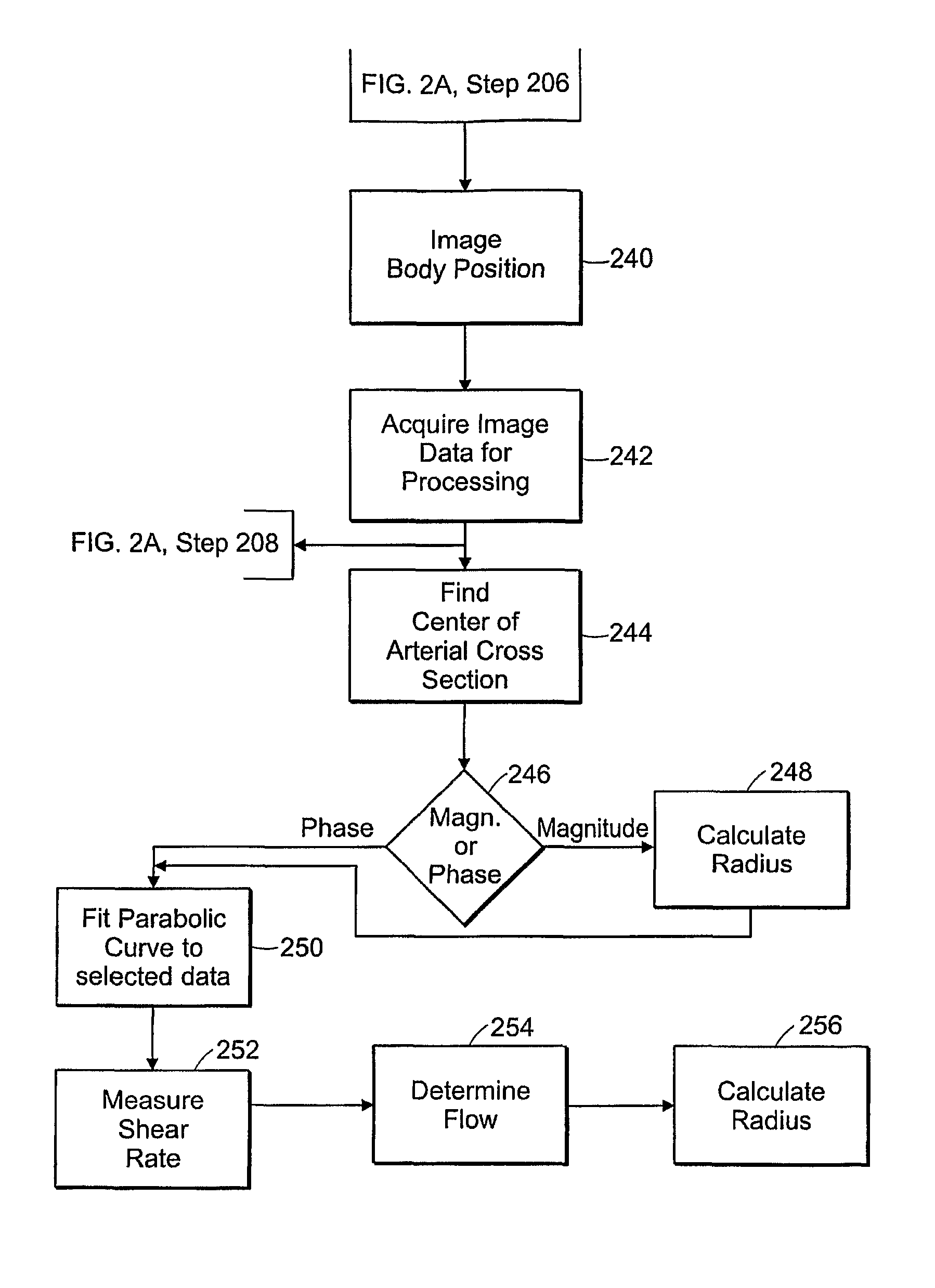Method of assessing central arterial stiffness using MRI, method of assessing vascular function including arterial stiffness, applications program and media embodying same
a central arterial stiffness and mri technology, applied in the field of methods of assessing arterial stiffness, can solve the problems of increased risk of atherosclerosis and cardiovascular events, lack of specificity in predicting atherosclerosis severity in individuals, and time-consuming scanning and data analysis, etc., to save time
- Summary
- Abstract
- Description
- Claims
- Application Information
AI Technical Summary
Benefits of technology
Problems solved by technology
Method used
Image
Examples
example 1
Introduction:
[0122]Central arterial stiffness is a powerful predictor of atherosclerosis and cardiovascular events, and is associated with cardiovascular risk factors. One of the most important ways of measuring arterial stiffness is by measuring pulse wave velocity—pulse waves travel faster in stiffer vessels. Most MRI applications of pulse wave velocity to assess central arterial stiffness consist of measuring the difference in pulse wave arrival time between two sites in the aorta. However, the pulse wave arrives at the femoral artery just after traversing the central arteries, and the femoral artery is easily accessible by MRI.
Purpose:
[0123]To compare pulse wave arrival time at the femoral artery between two groups—one group with and the other group without cardiovascular risk factors.
Methods:
[0124]We studied 12 men—6 men 40 years of age or younger, with no cardiovascular risk factors; and 6 men over 50 years of age with type 2 diabetes. A four-element phased-array receiver coil...
PUM
 Login to View More
Login to View More Abstract
Description
Claims
Application Information
 Login to View More
Login to View More - R&D
- Intellectual Property
- Life Sciences
- Materials
- Tech Scout
- Unparalleled Data Quality
- Higher Quality Content
- 60% Fewer Hallucinations
Browse by: Latest US Patents, China's latest patents, Technical Efficacy Thesaurus, Application Domain, Technology Topic, Popular Technical Reports.
© 2025 PatSnap. All rights reserved.Legal|Privacy policy|Modern Slavery Act Transparency Statement|Sitemap|About US| Contact US: help@patsnap.com



